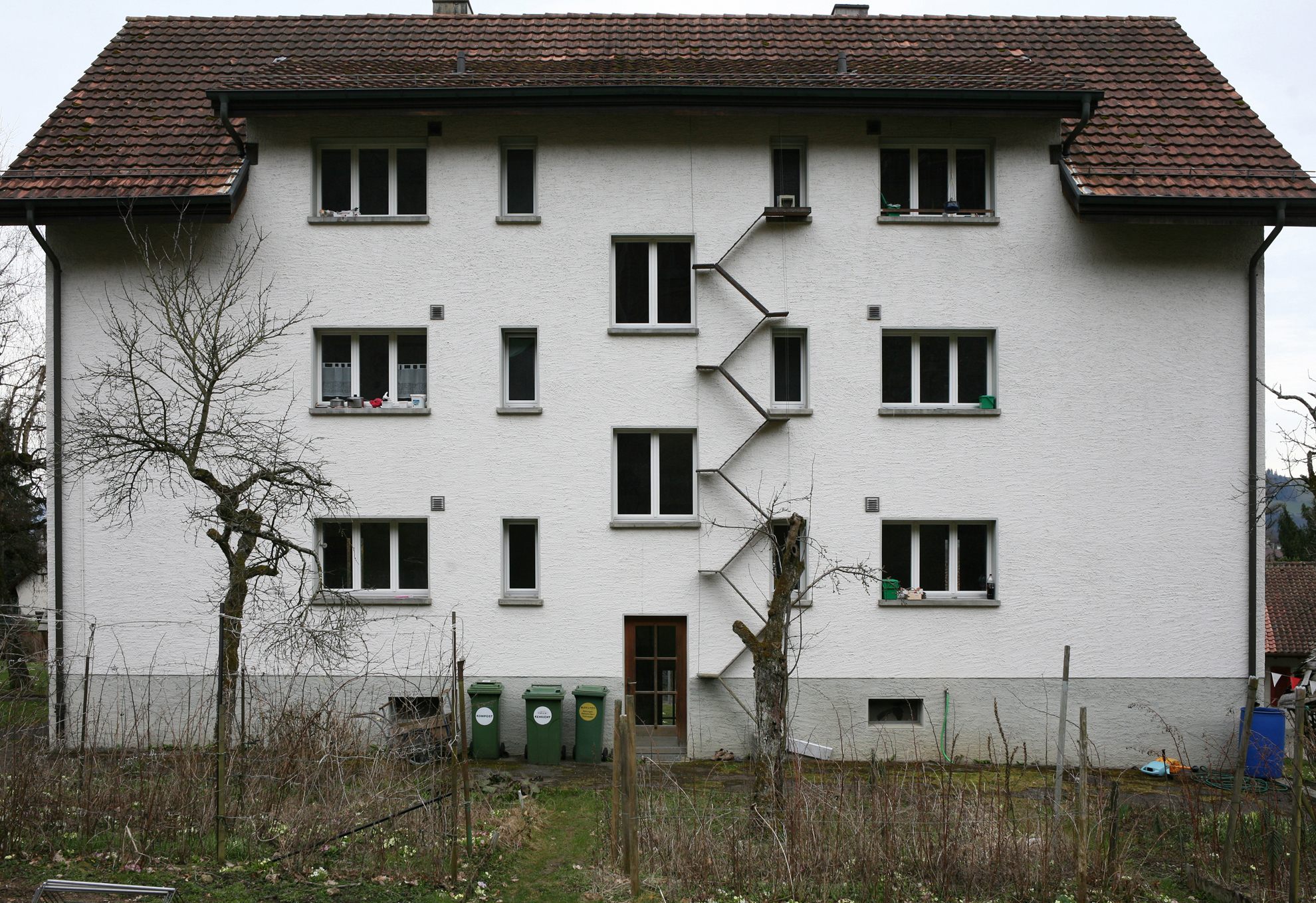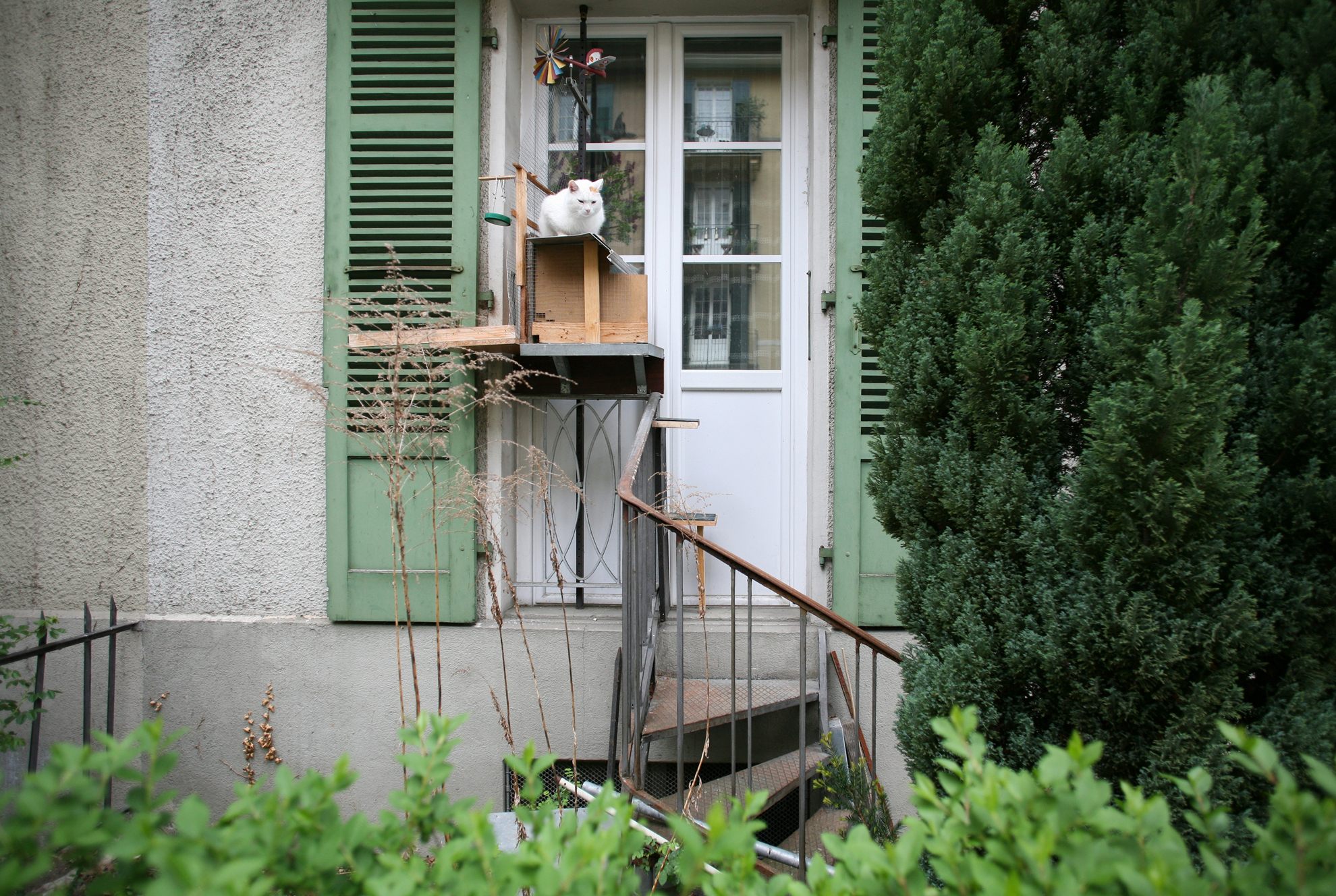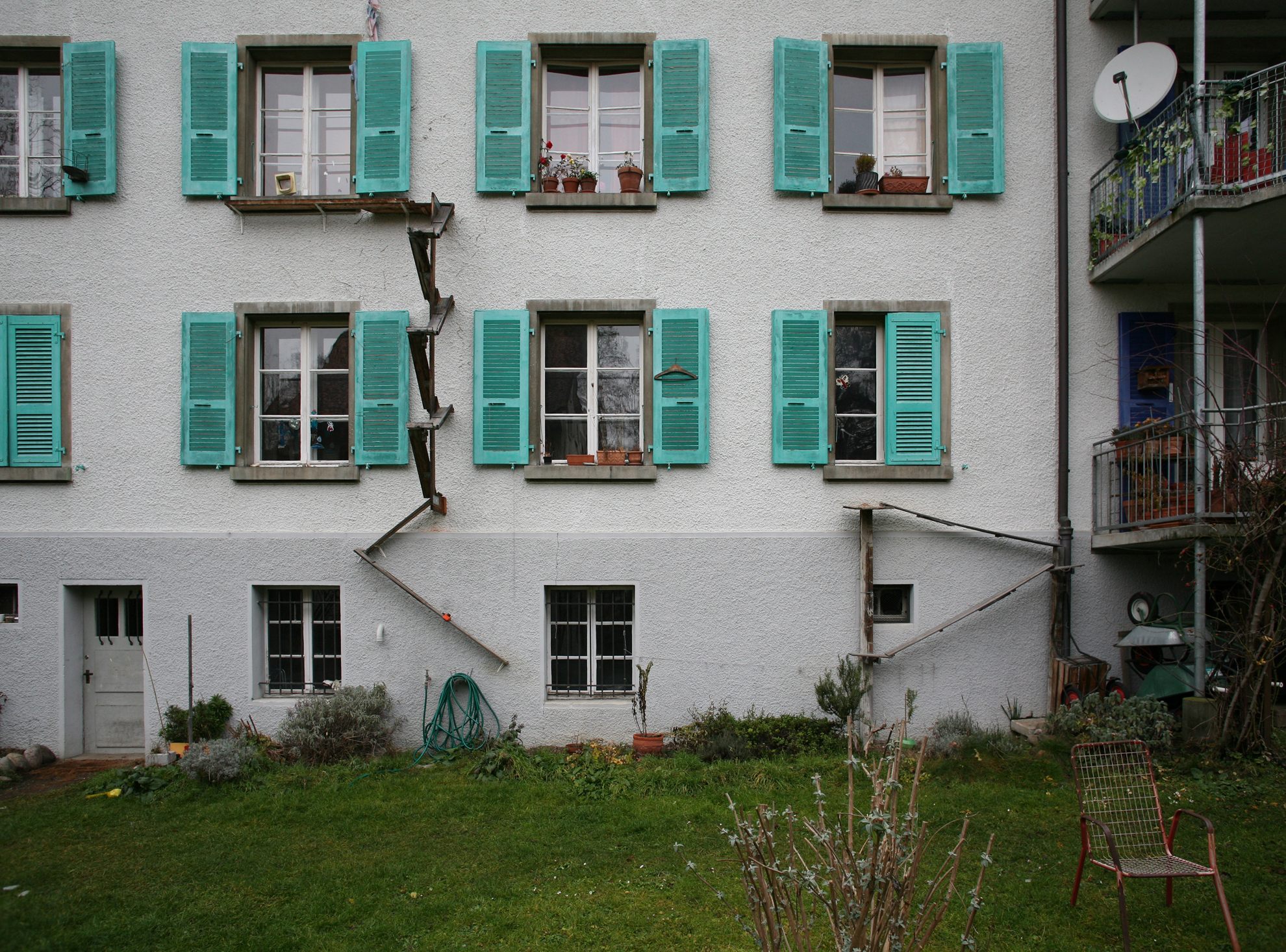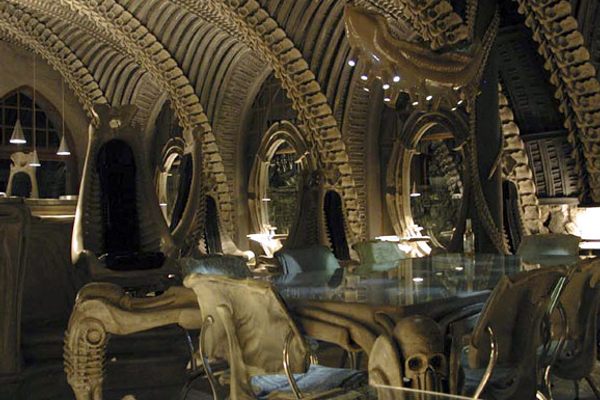The Swiss City That’s Full of Cat Ladders
A photographer captured Bern’s eclectic and charming feline structures.

Imagine, if you will, what it’s like to be an average cat. You live with your owner on the fourth floor of an apartment building and, like so many of your fellow felines with exposure to the outside world, you have a fierce case of wanderlust. But until your owner gets home, you can do little more than sit on a sunlit windowsill, press your nose against the glass, and peer wantingly at the neighborhood below. You are beholden to someone who chooses to spend most of the day separated from you. No wonder your species is so notoriously moody.
In most parts of the world, you’d be stuck at home until someone comes and lets you out. But in certain European countries, human residents have built outdoor climbing aids, called cat ladders, to help their feline friends come and go as they please.

Homemade cat ladders are as architecturally eclectic as they are charming. Many are simple and economical: a teetering plank between balconies; spindly pegs ascending a vertical drain pipe; a slatted wooden bridge laid diagonally from the branch of a climbable tree to a higher windowsill. Some are precarious, scaffolding-like structures of wood and metal that zigzag up multiple stories. Still others span intimidatingly wide gaps between roofs and apartment buildings, dozens of feet off the ground. At least one lucky cat has its own spiral staircase with a small perching platform on top.
Despite their whimsical photogeneity, cat ladders haven’t yet been thoroughly documented. The graphic designer and writer Brigitte Schuster aims to change that. She had spotted the occasional cat ladder in her native Germany, but it wasn’t until she moved to Bern, Switzerland, six years ago that she realized how popular they were. She’s since taken hundreds of photographs of cat ladders around the Swiss capital, compiling them in a book analyzing the structures from sociological, architectural, and aesthetic perspectives. Swiss Cat Ladders will be published by Schuster’s book imprint, Brigitte Schuster Éditeur, in German and English in fall 2019.

Cats are the most common household pet in Switzerland, and also in Germany, Austria, and the Netherlands—all countries, Schuster says, where cat ladders are staples of urban and suburban environments. But a country that loves cats isn’t necessarily one that embraces cat ladders.
There aren’t cat ladders in the United States, where many states have so-called leash laws that forbid the animals from being off-leash outdoors, and where city dwellers have built screened-in “catios.” Russia, which ranks highest in Europe in both cat ownership and household cat population, doesn’t have cat ladders. In Istanbul, hundreds of thousands of stray cats—some feral, some cuddly, all ownerless—roam and scale the city without the help of ladders designed specifically for them. A recent documentary, Kedi, tells the story of seven such cats, for whom every climbable structure is a “cat ladder.”
“I was questioning if cats really need these cat ladders, or if humans impose the cat ladders on their cats because they find them practical,” Schuster says. Her question appears backed up by traditional feline lore: If cats always land on their feet (and have nine lives), why do they need cat ladders? Couldn’t someone just open the window for their dearest feline and let her find her way to the ground, even if doing so requires an acrobatic leap?
“Cats do need them!” says Dennis C. Turner, a veteran cat behaviorist who’s considered, by his estimate, one of the world’s “four or five foremost cat experts.” “They’re very important. But they’re rarely mentioned in books about how to properly house cats.”

Turner points to two reasons why cats need cat ladders: their physical safety and their mental well-being. Contrary to popular belief, cats don’t always land on their feet—the innate “cat-righting reflex” only works up to 30 meters, Turner says—and even when they do, their daredevil leaps can result in injuries as severe as torn ligaments, ruptured tendons, and broken legs.
There’s a saying Turner often repeats during interviews and public lectures: “Once an outdoor cat, always an outdoor cat.” That is, if a kitten was born outside and spent its first weeks outdoors, it should be kept as a cat with outdoor access for the rest of its life. Outdoor cats held “captive” indoors, Turner says, will invariably develop behavioral problems, including urine marking and scratching furniture and drapes. For people in urban areas who live in apartments, or even in two-story houses, cat ladders (plus cat doors) are the easiest way to let cats come and go.
For those who might find the notion of an outdoor cat objectionable, Turner isn’t against keeping cats exclusively indoors—“I wouldn’t do it myself,” he says, “but that’s personal”—as long as two rules are fulfilled: They’ve never been outside and their home indoors is physically and mentally stimulating, with scratching posts, elevated perches, sunny views, and so on.

Not all cats immediately take to their ladders like catnip. There’s a learning curve. Schuster says that some cat owners will put food on different steps to lure their pets out, in a form of positive reinforcement. “Cats only learn when they want to learn,” Turner says. “Punishment never works with them, but positive reinforcement does.”
In the preface of Schuster’s book, Turner writes, “I personally think that all ladders indicate a willingness to house the cats properly and respect the animals’ needs.” A home with a cat ladder is a home that knows and respects the needs of the cats who live there.
“If it fits, I sits” is an oft-memed saying associated with images of cats sitting snugly inside boxes, baskets, bowls, and other containers. Cats’ relationship with cat ladders might be described thusly: “If it’s mine, I climb.”


















Follow us on Twitter to get the latest on the world's hidden wonders.
Like us on Facebook to get the latest on the world's hidden wonders.
Follow us on Twitter Like us on Facebook